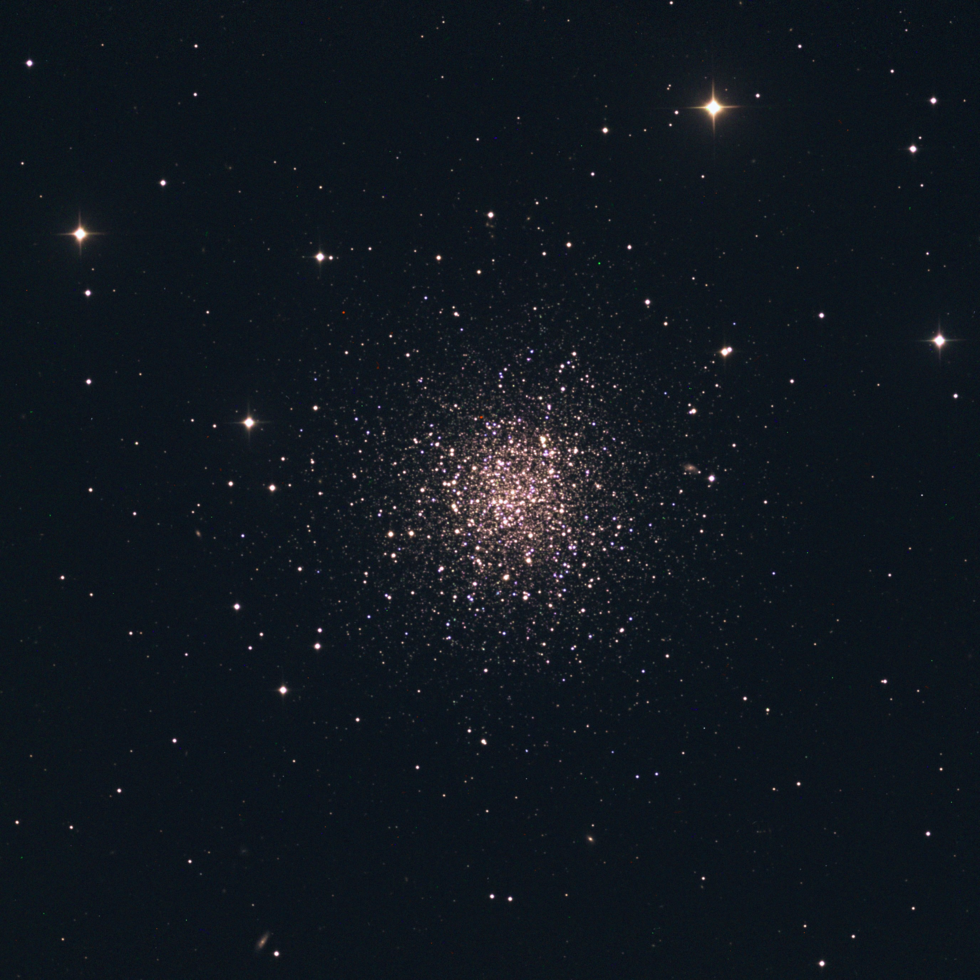NGC 288 - Breaking Up is Hard to Do
NGC 288 - Breaking Up is Hard to Do
Breaking up is hard to do - and it happens to stars as well, including those here in the globular cluster NGC 288, nearly 30,000 light years from Earth.
Most globular clusters have a tight hold on their stars, but not NGC 288, due to the low concentration of stars within this cluster. This likely means the stars will drift apart from each other here, as well as other low-concentration globular clusters, according to the European Space Agency.
In 1785, astronomer William Herschel first spotted NGC 288 in the constellation Sculptor, seeing individual stars in a globular cluster for the first time. Although it cannot be seen in this image, NGC 288 is also surrounded by an irregular ring of stars.
Three hundred centuries ago, genetically-modern yet Stone-Age humans were driving Neanderthals from Europe and Asia. Dyed fibers of wild flax were first woven into fabric in a land now covered by the nation of Georgia. In a region that would one day be known as Austria, the oldest-known stone statuette - Venus of Willendorf – was crafted by an unknown artist.
And, 30,000 light years from Earth, light from distant stars headed out on a journey that would end in a telescope in Chile, forming this photograph.
Composed from seven individual images taken over 70 minutes in red, green, blue, and mono wavelengths by the 0.6-meter CHI-1 Telescope in Chile from Telescope Live.
Most globular clusters have a tight hold on their stars, but not NGC 288, due to the low concentration of stars within this cluster. This likely means the stars will drift apart from each other here, as well as other low-concentration globular clusters, according to the European Space Agency.
In 1785, astronomer William Herschel first spotted NGC 288 in the constellation Sculptor, seeing individual stars in a globular cluster for the first time. Although it cannot be seen in this image, NGC 288 is also surrounded by an irregular ring of stars.
Three hundred centuries ago, genetically-modern yet Stone-Age humans were driving Neanderthals from Europe and Asia. Dyed fibers of wild flax were first woven into fabric in a land now covered by the nation of Georgia. In a region that would one day be known as Austria, the oldest-known stone statuette - Venus of Willendorf – was crafted by an unknown artist.
And, 30,000 light years from Earth, light from distant stars headed out on a journey that would end in a telescope in Chile, forming this photograph.
Composed from seven individual images taken over 70 minutes in red, green, blue, and mono wavelengths by the 0.6-meter CHI-1 Telescope in Chile from Telescope Live.
SPECIFICATIONS
Telescope
CHI-1
Camera
FLI ProLine PL9000
Location
El Sauce
Date of observation
01 July 2022
Filters
LRGB
Processing
LRGB
Credits
James Maynard


